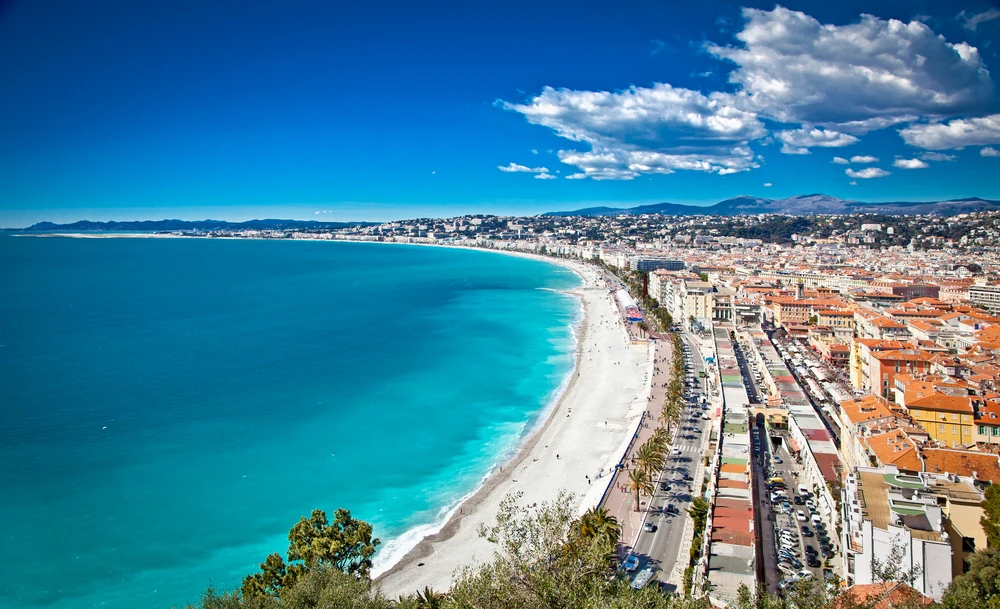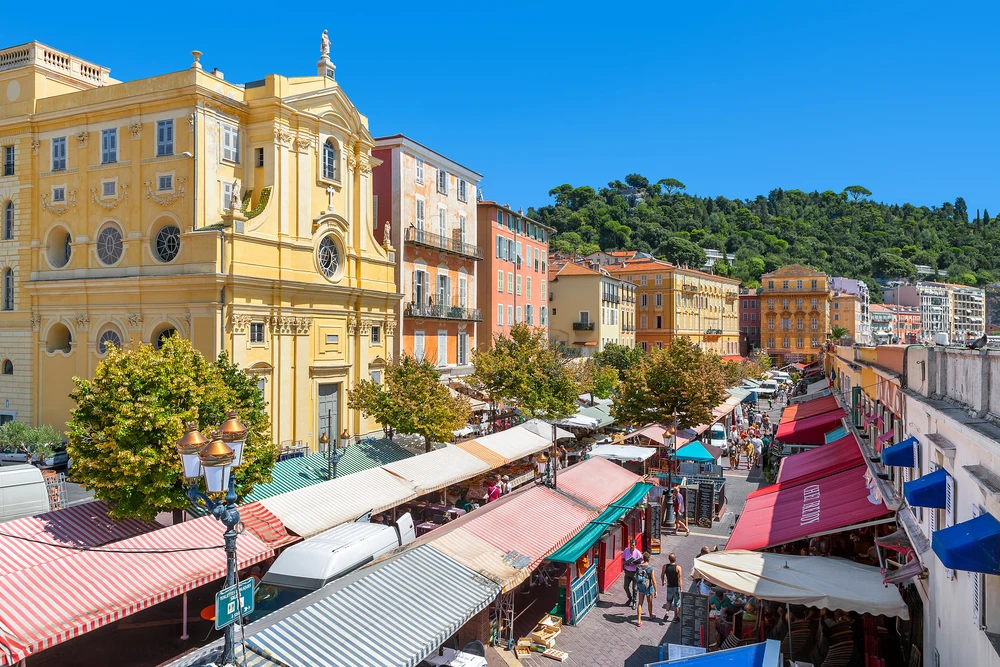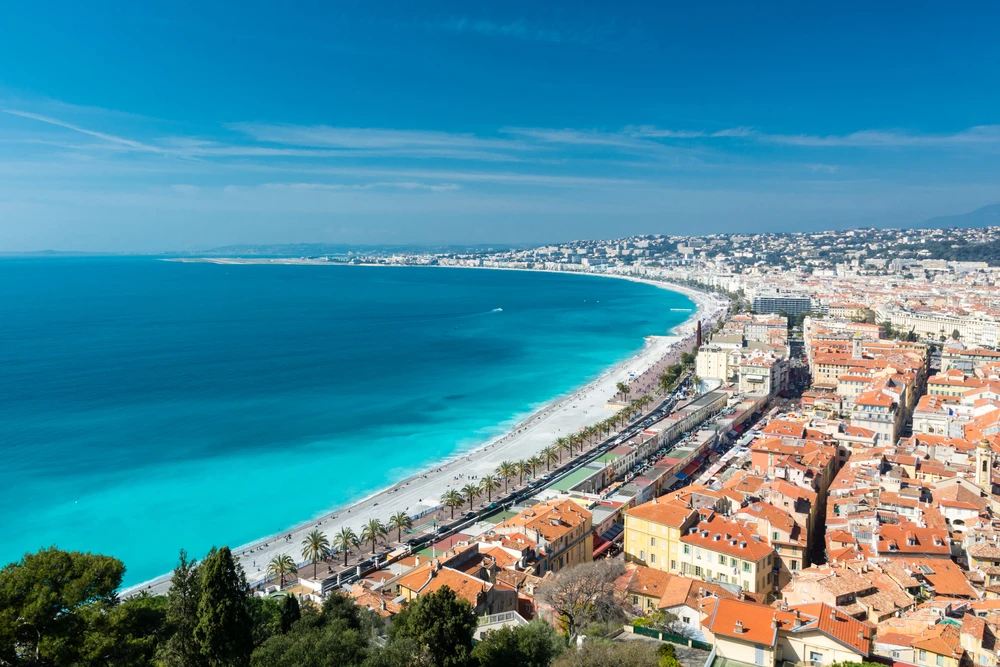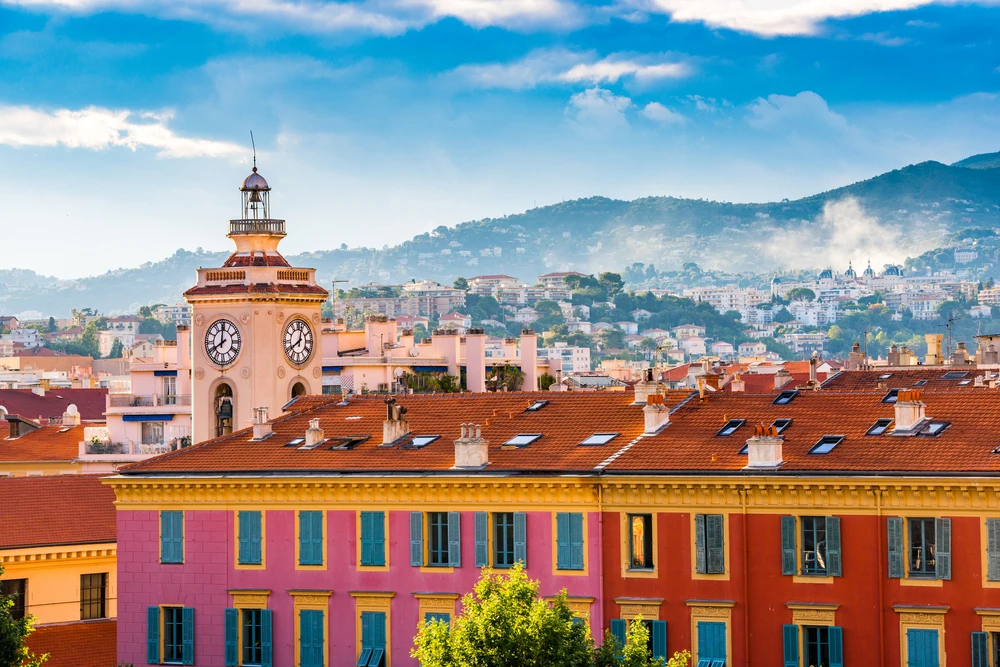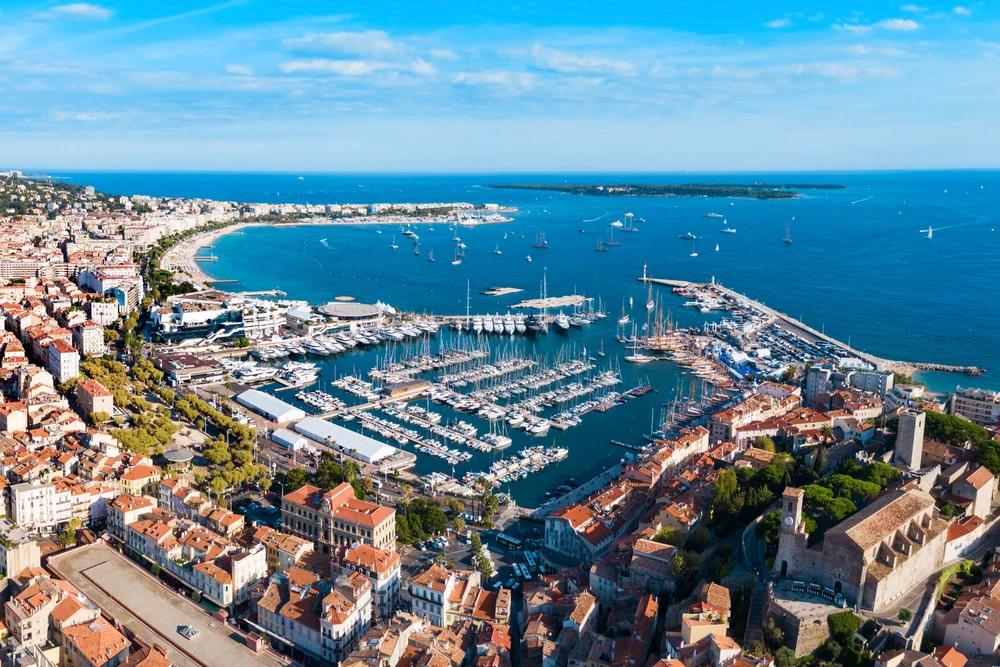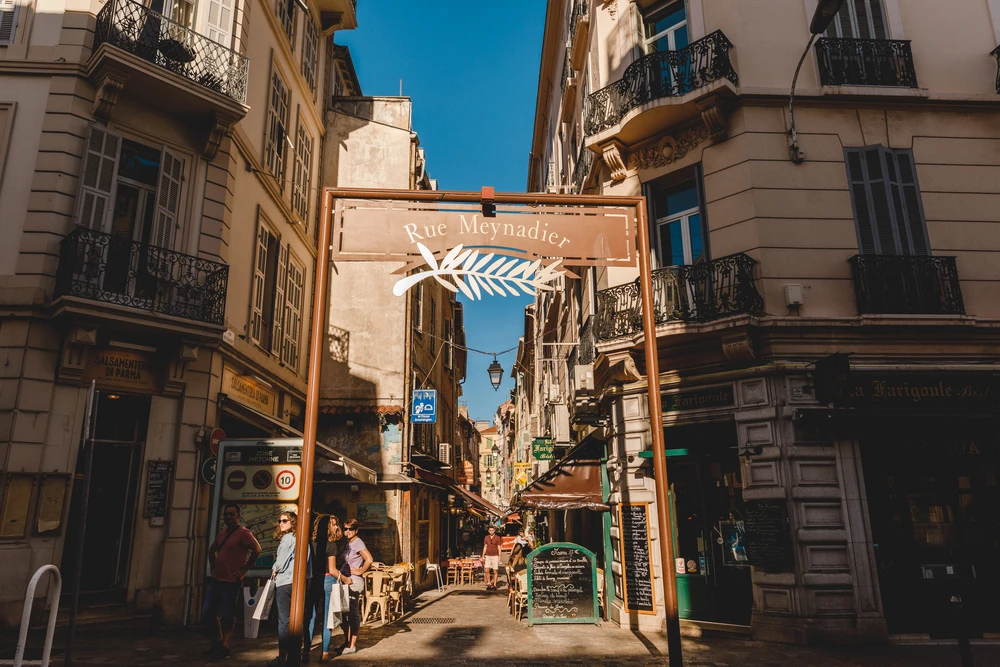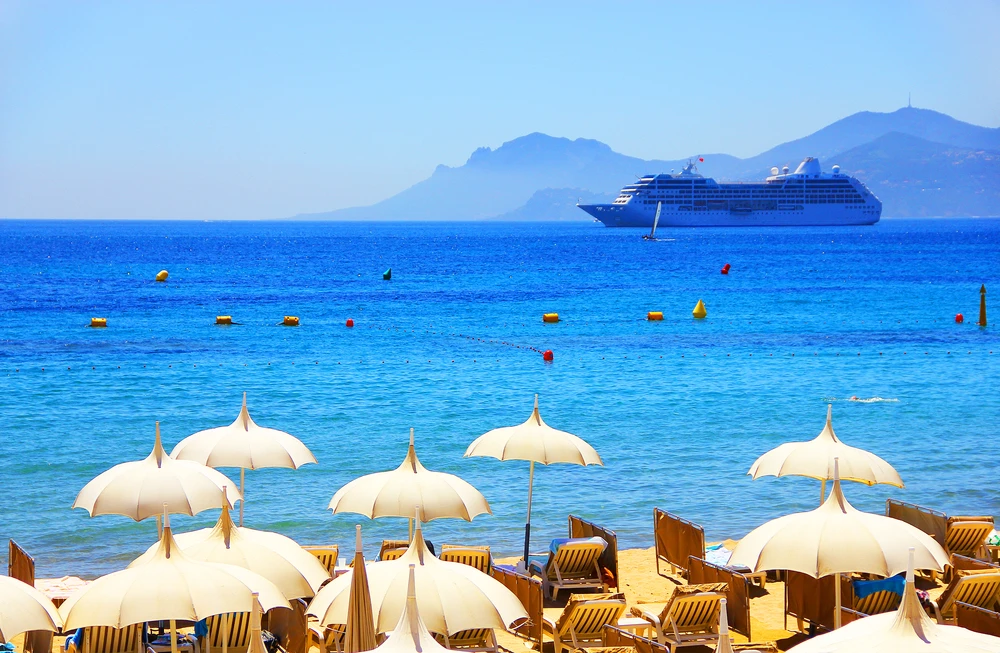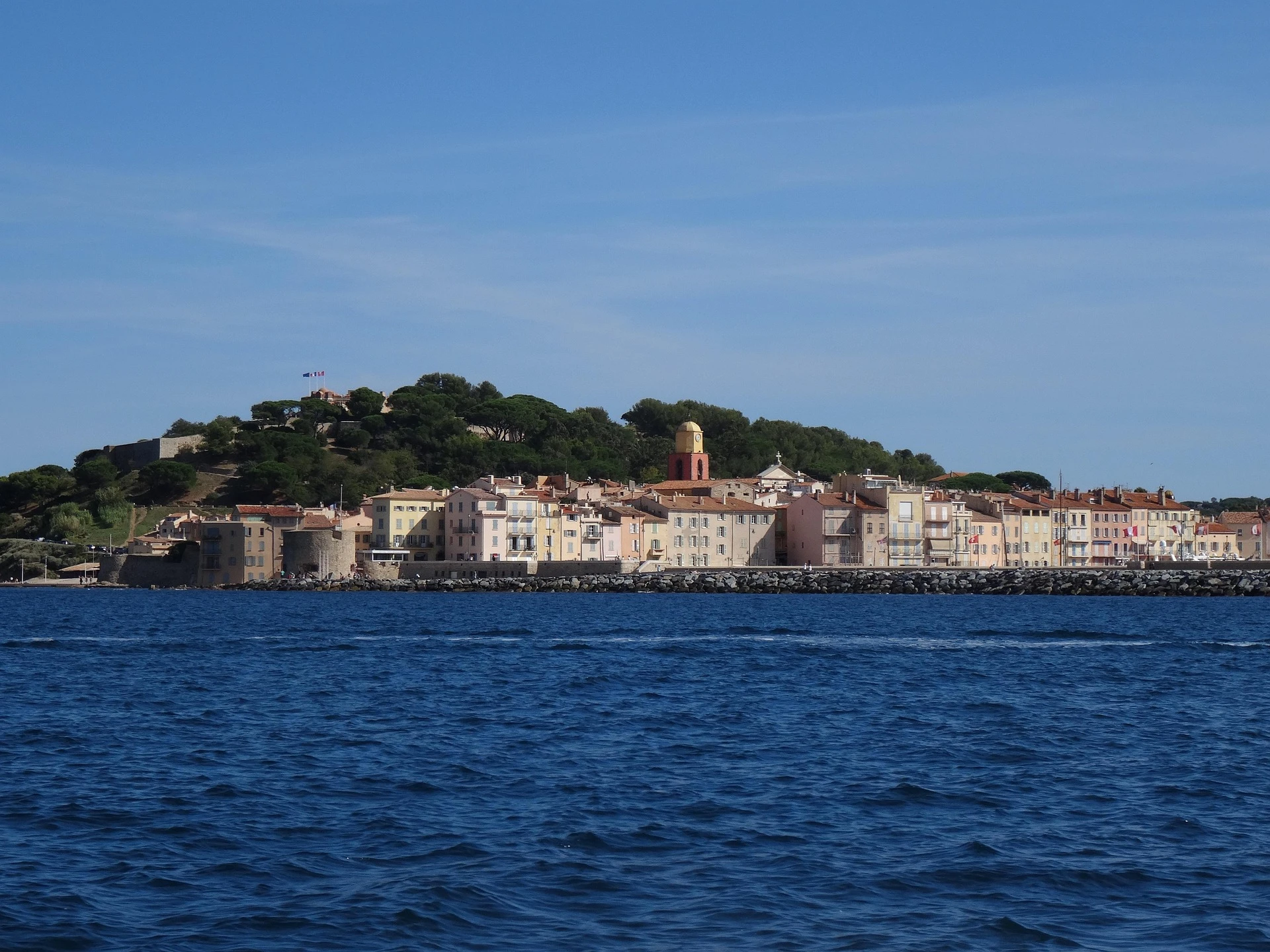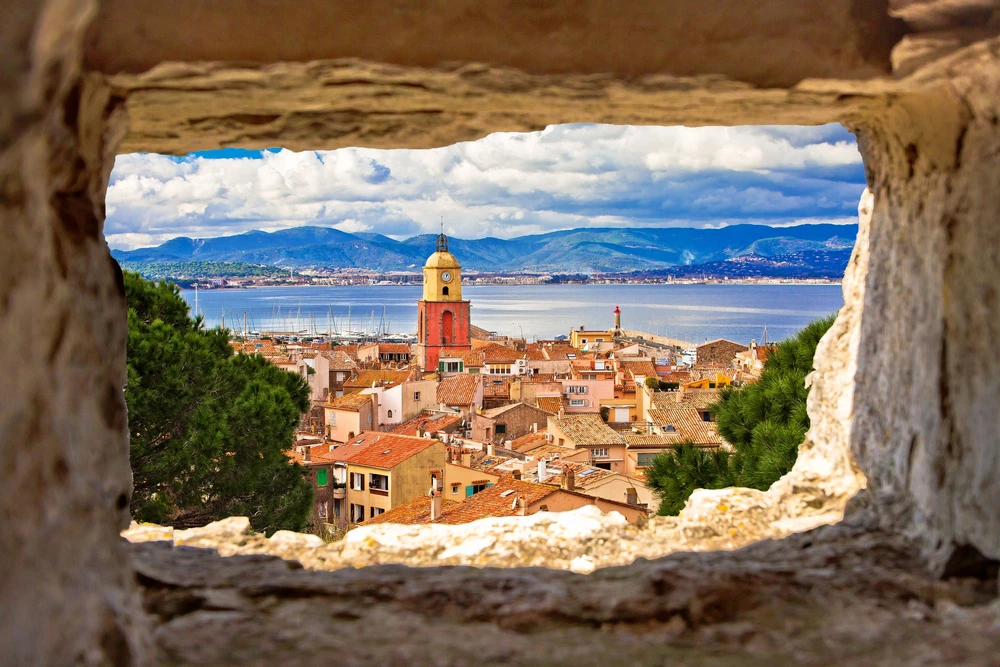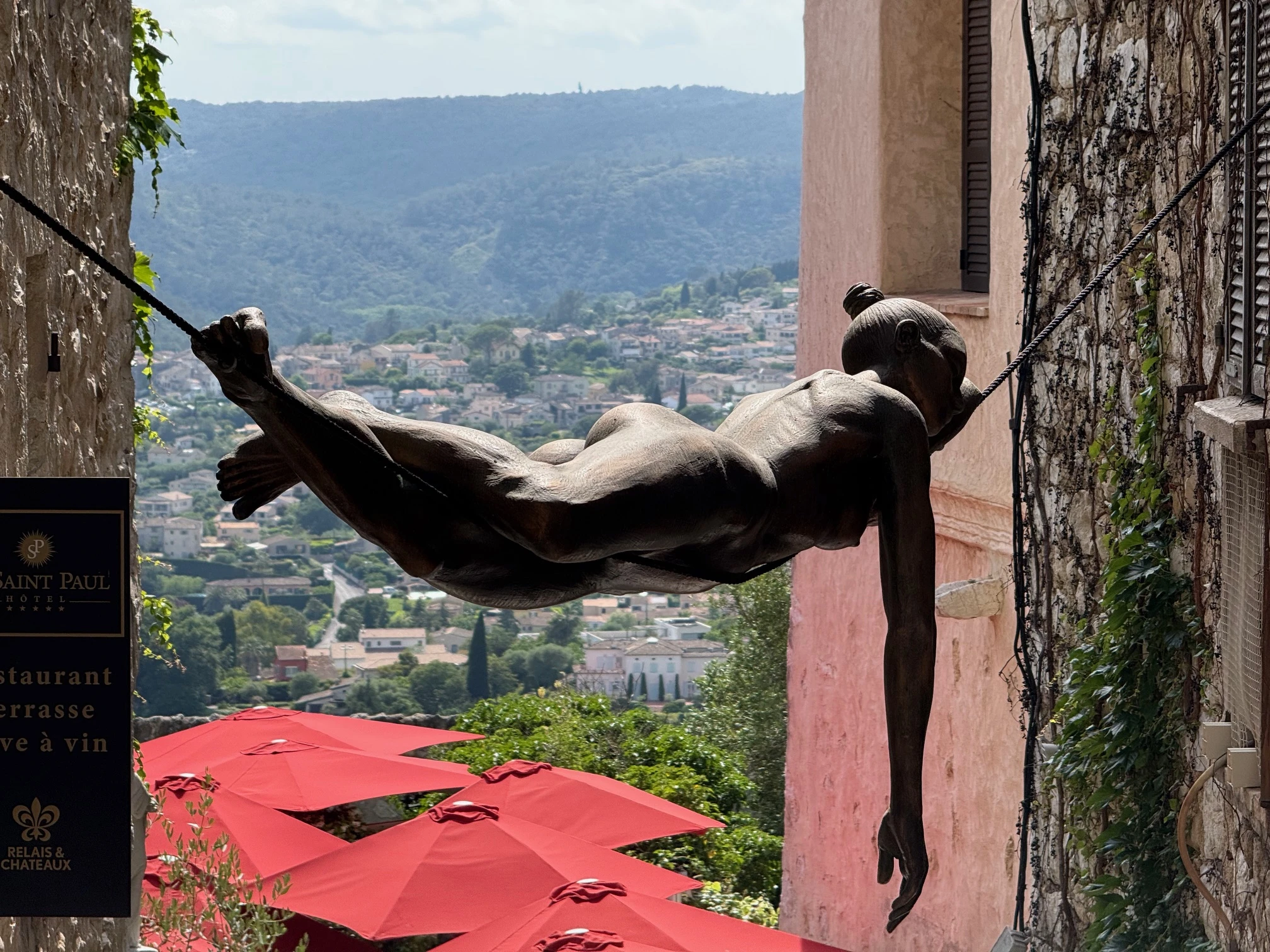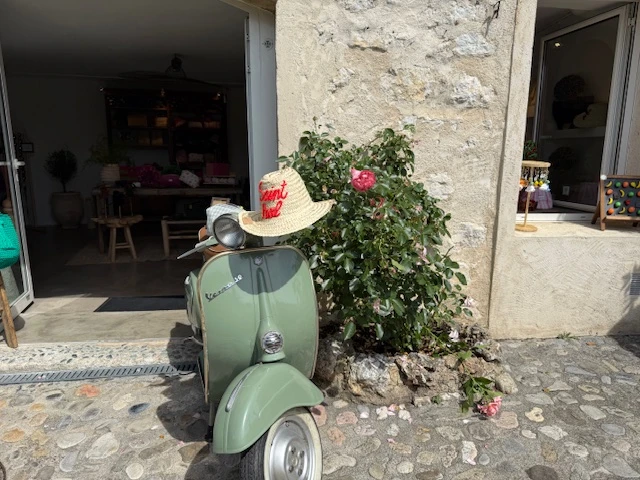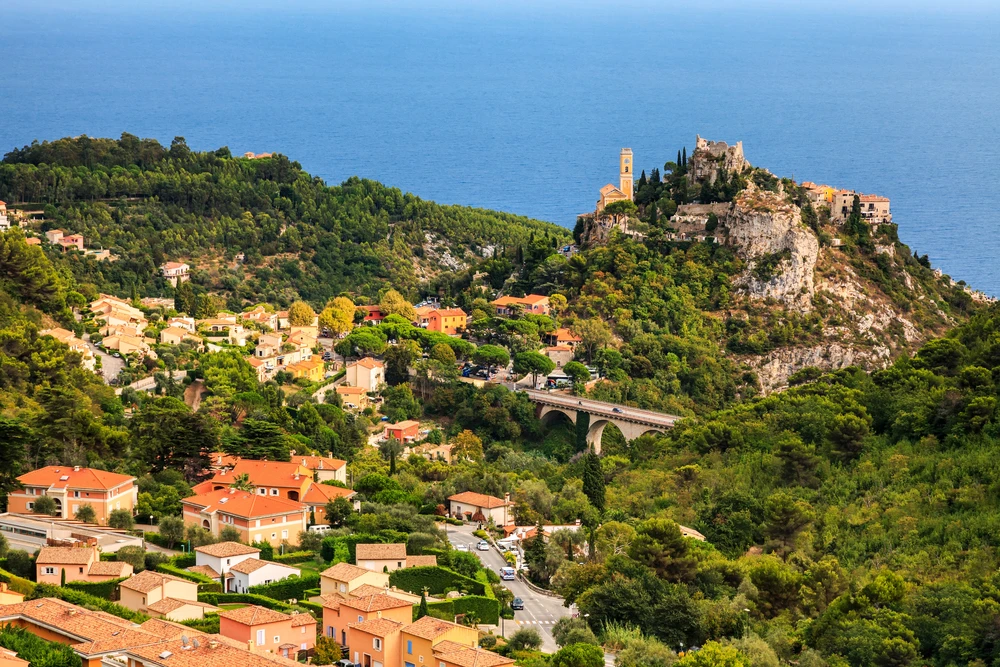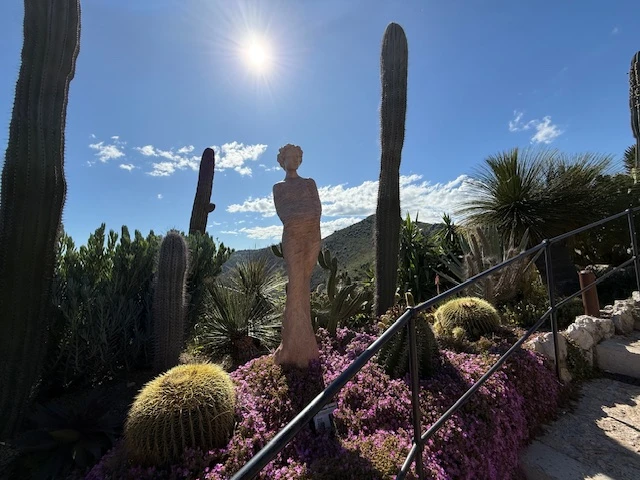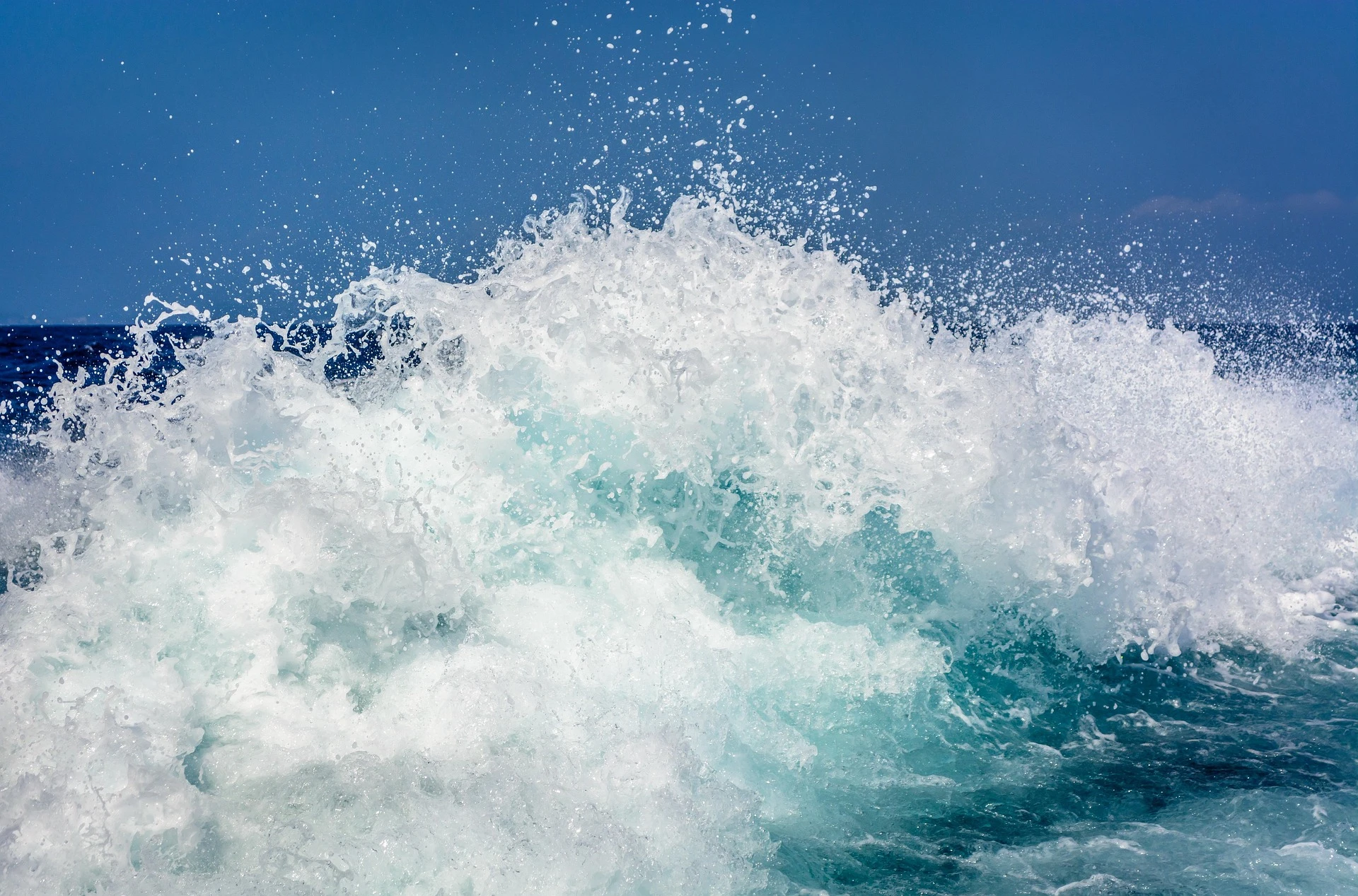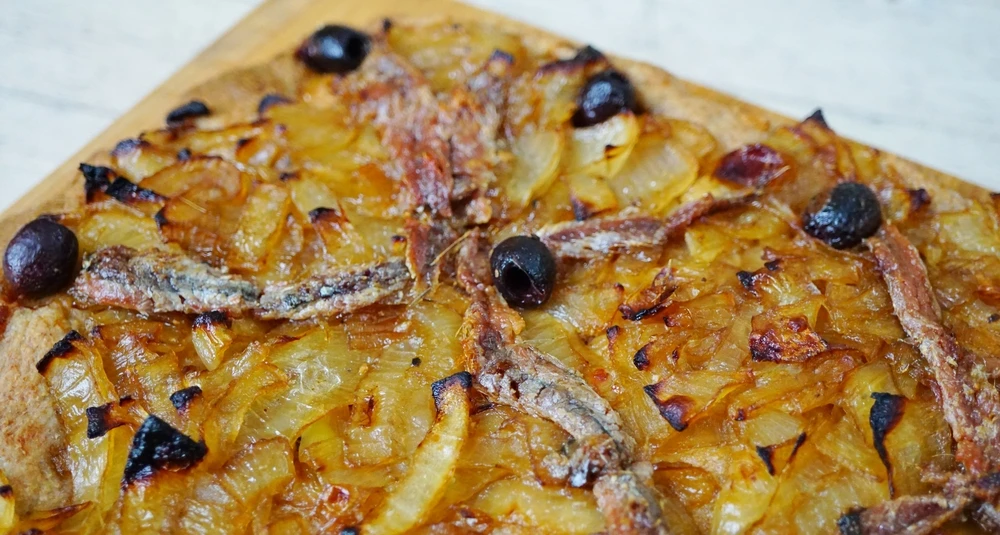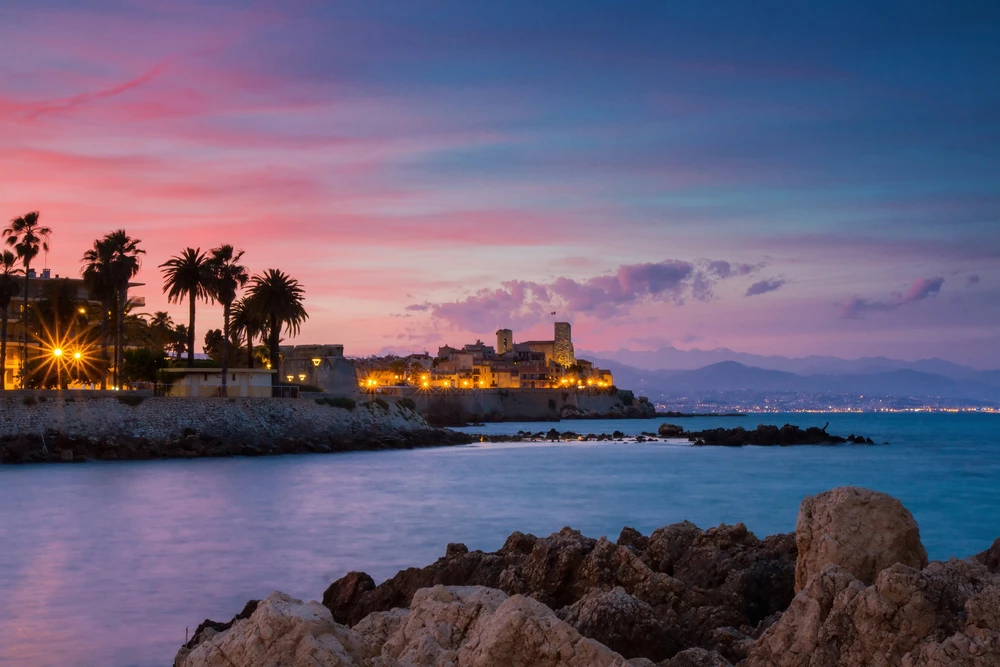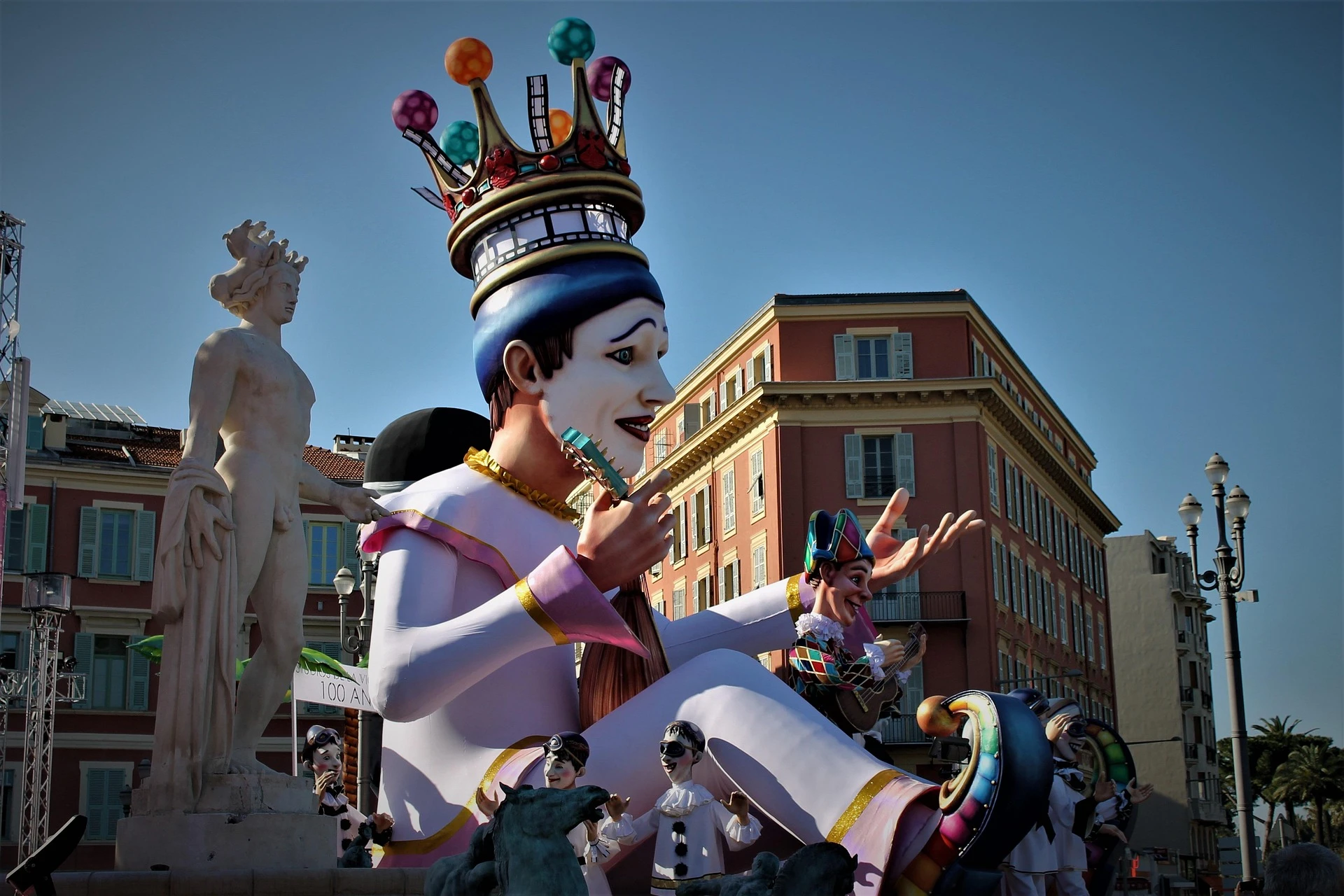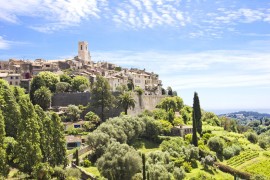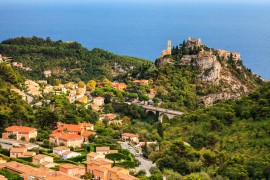What is the Côte d'Azur?
The term Côte d'Azur was coined in 1887 by writer Stéphen Liégeard, who fell under the spell of this stretch of Mediterranean coastline. The Côte d'Azur stretches from Toulon to the Italian border, covering mainly the Var and Alpes-Maritimes.
Nice and the Bay of Angels/ photo by Aleksandar Todorovic/Shutterstock.com
From the 19th century onwards, the region attracted the European aristocracy. The English wintered in Nice, the Russians in Menton, and wealthy families built sumptuous villas, still visible today along the coast and in the hills. In the 20th century, the Côte d'Azur became a meeting place for artists and stars: Picasso painted in Antibes, Matisse in Nice, Chagall set up a museum here, Brigitte Bardot made Saint-Tropez a myth and the Cannes Film Festival became a worldwide event.
It is to this gentleman, Monsieur Liegard, that the Côte d'Azur owes its nickname / Image chosen by Monsieur de France: wikipedia
But behind the glitz, the Côte d'Azur remains deeply Mediterranean, authentic, and you'll discover: perched villages, exotic gardens, colored markets, fishing ports, and a art de vivre marked by sun and sea. It's this diversity that makes it one of Europe's most visited regions.
Le Cours Saleya in Nice and its market / photo by Rostislav Glinsky/Shutterstock.com
What's not to miss on the Côte d'Azur?
1. Nice and the Promenade des Anglais
The Promenade des Anglais in Nice seen from the sky / Photo chosen by Monsieur de France: depositphotos
Nice is the gateway to the Côte d'Azur and its cultural capital. The Promenade des Anglais, a long palm-fringed strip facing the sea, epitomizes the city. Built in the 19th century, it owes its name to the British winterers who loved to stroll along it. Legendary hotels such as the Negresco can be admired here.
Le Negresco on "the prom" / Photo chosen by monsieurdefrance.com : by Erich Westendarp from Pixabay
The Vieux-Nice plunges into an Italian ambience: ochre facades, green shutters, linen in the windows. The marché du Cours Saleya, with its flowers, fruit and spices, reflects the Mediterranean soul. From the colline du Château, the view over the Baie des Anges is breathtaking. Nice is also about art, with the Matisse museum, the Chagall museum and an architectural heritage that ranges from Baroque to Modernism.
Nice and its colors / photo by Reuben Teo/Shutterstock.com
- Address: Promenade des Anglais, 06000 Nice
- Nearest train station: Nice-Ville station (1.5 km)
- Distance from Paris: 932 kms (10H00) by car, 6H00 by train)
- By air: Nice-Côte d'Azur airport, 2nd largest in France.
2. Cannes and its Croisette
Cannes / Photo chosen by Monsieur de France: depositphotos
Cannes is world-famous for its Film Festival, established in 1946. Every May, the Croisette becomes the center of the film world. But there's much more to the town than this festival or even glamour: its Vieux-Port, its narrow streets of the Suquet, dominated by the church of Notre-Dame de l'Espérance, recall its past as a fishing village, and immerse you in the typical atmosphere of the Mediterranean shores on the French or Italian side.
The narrow streets of Cannes / Photo chosen by Monsieur de France: depositphotos
The Croisette, 3 km long, lines up palaces, private beaches and luxury boutiques. But just take a boat to discover another face of Cannes: the Isles de Lérins. Sainte-Marguerite, covered in pine trees, is home to the royal fort where the mysterious "Iron Mask" was locked up. Saint-Honorat, smaller, is a spiritual haven with its still-active monastery and monk-grown vineyard.
A select beach and a yacht approaching Cannes / Photo chosen by Monsieur de France: depositphotos
- Address: Boulevard de la Croisette, 06400 Cannes
- Nearest train station: Cannes train station (500 m)
- Distance from Nice : 33 km (40 min by car, 30 min by train)
3. Saint-Tropez, the Mediterranean myth
Saint Tropez seen from the open sea/ Photo chosen by Monsieur de France : by Emma Blowers from Pixabay
Saint-Tropez is the epitome of a village turned legend. Starting out as a simple fishing port, by the 1950s it was attracting artists and celebrities thanks to Brigitte Bardot. Tropezians in the 50s would have been surprised to hear that their village would become the most sought-after site on the Côte d'Azur, and yet.... Even today, its bustling port, yachts and terraces make it a unique social scene. When it comes to heritage, Saint-Tropez is well worth a visit. Its 17th-century citadelle, overlooking the bay, tells of the place's military history. The Musée de l'Annonciade is a reminder that painters such as Signac and Matisse stayed here. The 5 km-long beaches of Pampelonne are world-famous, combining private clubs and wilder spaces.By the way, remember to try the famous tarte tropézienne, a dessert that has become symbolic, and so much for your "summer body".
- Address: Port de Saint-Tropez, 83990 Saint-Tropez
- Nearest train station: Saint-Raphaël Valescure (40 km, shuttle bus available)
- Distance from Nice: 110 km (1h45 by car)
4. Saint-Paul-de-Vence, artists' village
Saint Paul de Vence on its spur dominating the landscape / Photo chosen by monsieurdefrance.com: depositphotos.
Perched on a hill overlooking the Var valley, Saint-Paul-de-Vence is one of the most famous medieval villages on the Côte d'Azur. Its perfectly preserved 16th-century ramparts surround a labyrinth of cobbled streets lined with stone houses and art galleries. In the 20th century, Saint-Paul-de-Vence became an artistic mecca: Matisse, Picasso, Chagall and Prévert frequented its alleyways and cafés. Painter Marc Chagall is even buried here. Even today, over 60 galleries and studios keep this creative tradition alive.
At Saint Paul de Vence we come across art in the most unexpected places / Photo Jérôme PROD'HOMME (c)
A must-see is the Fondation Maeght, opened in 1964, which houses a unique collection of modern art with works by Miró, Calder, Braque or Giacometti, in an architectural setting by Josep Lluís Sert. The village atmosphere remains typical: play a game of pétanque in the church square, have lunch on the terrace under the plane trees, or simply stroll through the alleyways at sunset, when the blonde stone lights up.
- Address: 2 Rue Grande, 06570 Saint-Paul-de-Vence
- Nearest train station: Cagnes-sur-Mer station (7 km, direct bus)
- Distance from Nice: 20 km (30 min by car, 45 min by bus)
Saint Paul de Vence is brimming with small artisan boutiques and art galleries / Photo Jérôme Prod'homme (c)
5. Èze and its exotic garden
Eze is perched more than 400 meters above the waves / Photo chosen by monsieurdefrance.com: depositphotos.
Perched 429 m above the Mediterranean, Èze is an extraordinary medieval village. Its cobbled streets, stone houses and art galleries offer a walk out of time. At the top, the exotic garden is planted with cacti and Mediterranean plants, with some of the most spectacular views on the entire Côte d'Azur. The sentier Nietzsche, which links Èze-sur-Mer to the village, offers an unforgettable hike through olive groves and garrigue. The path is a reminder that philosopher Friedrich Nietzsche is said to have found inspiration here for his work So Spoke Zarathustra.
The garden is embellished with works of art / Photo chosen by monsieurdefrance.com: Jérôme Prod'homme
- Address: Rue du Château, 06360 Èze
- Nearest train station : Èze-sur-Mer train station (8 km by bus)
- Distance from Nice: 12 km (25 min by car)
La grande bleue à Nice / Photo chosen by Monsieurdefrance.com: by confused_me from Pixabay
What to taste
The cuisine de la Côte d'Azur marries Provence and the Mediterranean. Enjoy:
Une socca / photo par bonchan/Shutterstock.com
-
the socca, a chickpea galette baked in a wood-fired oven, typical of Nice,
-
the pissaladière, a tart filled with melting onions and anchovies,
A pissaladière / photo by EQRoy/Shutterstock.com
-
the salade niçoise, colorful and fresh,
-
the zucchini flower fritters, a summer specialty,
Zucchini flower beignets / photo by Tatiana Vorona/Shutterstock.com
-
the ratatouille, simmered summer vegetables,
-
the tarte tropézienne, a creamy dessert that has become legendary,
-
the rosés de Provence and the vins de Bellet (near Nice).
Provence rosé is the great wine specialty of the Côte d'Azur / Photo chosen by Monsieur de France: by Karolina Grabowska de Pixabay
Provence's markets abound with olives, dried tomatoes, honey, aromatic herbs and goat's cheese. The meal is often enjoyed outside, on a terrace or facing the sea, accompanied by the song of the cicadas.
(Alcohol abuse is dangerous for your health, consume in moderation);
What you have to live for
The best seasons to visit
-
Spring (April-June): the hills are in bloom, temperatures ideal (18-25°C), crowds still reasonable.
-
Summer (July-August): the most festive period, with festivals, lively evenings and swimming. On the other hand, the sites are very busy.
The evenings are beautiful from May to October. Here in Antibes Juan les Pins / Photo chosen by monsieurdefrance.com : Circumnavi via dépositphotos
-
Autumn (September-October): warm seas, mild climate, more peaceful atmosphere.
-
Winter (November-March): frequent blue skies, mild climate, major events like the Carnaval de Nice or the fête du citron in Menton.
Typical experiences
Nice Carnival is highly anticipated and spectacular/ Photo pixabay
-
Attend the Carnaval de Nice, one of the most spectacular in the world.
-
See the floats of the fête du citron in Menton.
One of the superb floats studded with citrus fruits at the Menton Lemon Festival / Photo chosen by Monsieur de France: by Lisa Dubois de Pixabay
-
Discover the Festival de Cannes in May.
-
Take a stroll through perched villages like Saint-Paul-de-Vence or Gourdon.
-
Explore the wild caps: Cap-Ferrat, Cap d'Ail, Cap Dramont.
-
Take a trip to the Estérel massif, where the red rock plunges into the sea.
The Cannes Film Festival is an amazing time to be at if you like the hustle and bustle and bumping into celebrities / Photo chosen by Monsieur de France : tanka_v via depositphotos
Côte d'Azur: Practical information and websites
-
Access :
-
By plane: Nice-Côte d'Azur airport, 2nd largest in France.
-
By train: TGV from Paris to Nice (6h), TER services to Cannes, Antibes, Menton.
-
By road: A8 freeway (La Provençale).
-
Why not have a picnic on one of Nice's pebble beaches / Photo chosen by Monsieur de France: Pixabay
-
Official websites :
The Côte d'Azur isn't just a postcard of beaches and palm trees. It's a world in itself, where global cities and timeless villages coexist, prestigious events and Mediterranean traditions. Whether you come in winter for its carnivals, in spring for its flowers, in summer for its beaches or in autumn for its peaceful ambience, the Côte d'Azur always offers a bright and unforgettable face.
Cover page: depositphotos

